Contents
This culture of the nightshade family came to the territory of our country from distant India. It is recognized as one of the most difficult in terms of cultivation. But experienced gardeners manage to get a good harvest of their favorite vegetable, even in the Urals. Today we will talk about how to properly prepare the land and seeds for planting in a greenhouse, how to grow good seedlings, plant them in a greenhouse, ensure proper care, and apply the necessary fertilizers in a timely manner. From our article you will learn everything about growing eggplant in a greenhouse.
Soil and seed preparation
In order to get a good harvest of vegetables in the future, you need to purchase high-quality seed material in a specialized store. On the package, look for an indication of the variety or hybrid, the name, the length of the growing season, the degree of readiness of the seeds for sowing and the year they were collected. It is recommended to buy seeds that are zoned, for example, for the Urals. Because they are adapted to the climate of the region and have a strong immunity to diseases.
If the seed was purchased on the market and there are no special marks on the package, it is best to carry out pre-sowing preparation. You can and should put them in warm water with a temperature of +45 to + 50 degrees for 5 minutes. Next, disinfection is carried out with a solution of potassium permanganate for no more than 20 minutes. You can take a mixture of biofungicides and stimulants instead. Micronutrients are also added there. In this mixture, the seed stays up to 12 hours. The next step is the hardening process. Use the change of day and night temperatures during the week. The indicators of the first are at the level of + 18 – +22 degrees, the second – + 2 – +3. Immediately before planting, the seeds are seeded.
The soil mixture for planting both in the Urals and in other areas of the country should have a light structure, a neutral degree of acidity, be fertile and breathable. Usually, its composition includes peat, turf and soft forest soil, mature humus and sand. In proportions 1:2:2:1. It is permissible to take other suitable compositions. The soil should be disinfected and combined with biological products such as planrism, trichodermin in order to increase the amount of high-quality microflora. The stores have ready-made soil mixtures for planting.
Video “Cultivation Features”
From the video you will learn about the features of growing eggplant.
Growing seedlings
Usually, sowing seeds for seedlings begins on February 20 and continues until March 15. The degree of readiness of seedlings for planting in the ground is 45 – 55 days for early, 55 – 70 – for medium and 70 – 80 for late varieties. Disembarkation can be accelerated or scheduled for a later time if the weather conditions are changeable.
Remember that eggplant roots do not like transplants. Therefore, seedlings for giving should be prepared without picking, preparing separate containers. You can use seedling cassettes designed for 25 or 50 nests.
The soil mixture in containers must be moistened. You can not do it excessively, so as not to provoke rotting of the seeds. Further, for every 1 cm, 5 – 2 seeds are placed. They need to be sprinkled with dry soil mixture. Containers can be placed on a tray and allocated to them in a dark and warm place (with a temperature of + 3 – + 23 degrees). If necessary, the soil is moistened with fine spraying. Entrances most often appear 25 – 1 weeks after planting. It is not recommended to dive seedlings. If necessary, then it should be done when at least a couple of leaves appear. Seedlings can be deepened to cotyledon leaves. The first days of picking necessarily create a shadow. Do not forget about watering with warm water.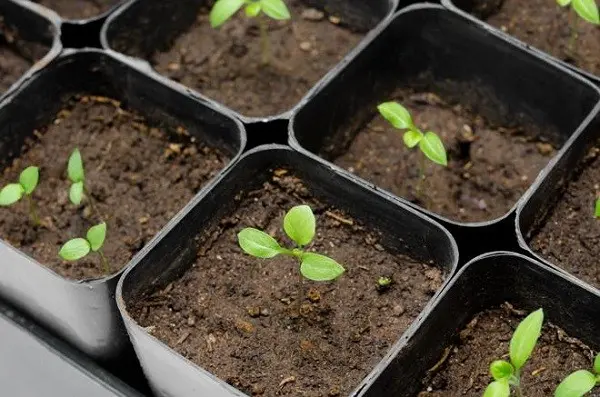
Seedling care involves soil temperature before germination at + 20 – + 25 – 28 degrees. From germination to the moment of hardening of seedlings at night – at least + 17, during the day – not lower than + 20. In the daytime, seedlings up to a week old will be properly grown at a temperature of + 14 – 16, at night – at + 8 – 10 degrees. Further, the temperature indicators are maintained at the level of + 11 – + 14 – 17 degrees.
Watering frequency every 3-4 days. The water must be heated to a temperature of at least + 20 degrees. Be sure to mulch with dry sand. Why? Since it is an excellent prevention of root rot. To prevent fungal and other infections, biofungicides should be added to the water, but not more than 2 times a month. To prevent seedlings from being attacked by pests, bioinsecticides are used.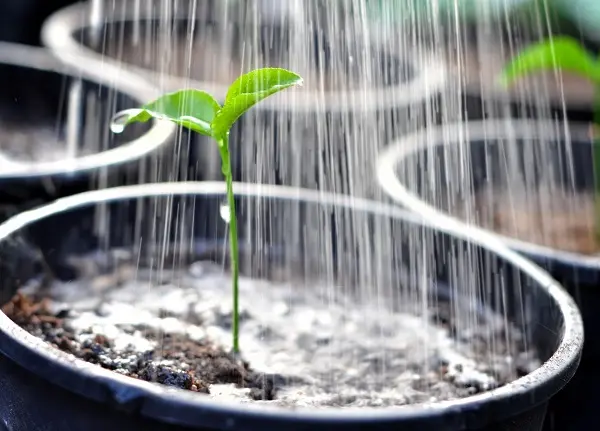
To grow high-quality seedlings, it is advised to feed it twice. This is done at the stage of the appearance of the first few sheets and 10 – 15 days before you plan to plant it in the ground in the Urals or in any other region of the country. For the first top dressing, mineral fertilizer (nitroammophoska, nitrophoska, Kemira) is well suited. The second is carried out with an infusion of ash. To do this, use 1 cup per 1 bucket of water and insist for a day. You can take another fertilizer with trace elements. Next, the seedlings are hardened. At night, it is transferred to a cool place, reduce the frequency of watering. Quality seedlings should have 6 – 8 leaves and developed roots, be from 20 to 25 cm in height.
Greenhouse landing
It is permissible to plant seedlings in open ground after warm weather is established. The timing of the landing directly depends on the degree of its development. They fall in the Urals and in other regions for the period from May 20 to June 10-15 and from June 1-10 until the end of the month (depending on which region, southern or middle). Eggplants in the greenhouse grow up to 1 meters in height. Therefore, it will be correct to plant them in a row.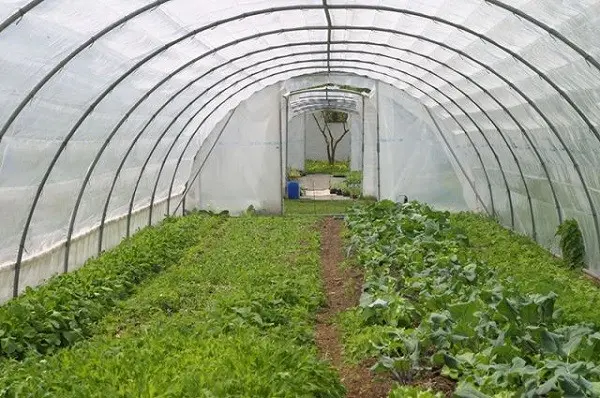
A distance of up to 45 cm is left between cultures. 1 – 2 liters of water should be poured into the hole. You can also mix with trichodermin and epin. Next, the plant should be planted, transferring to the hole or cassette. It is deepened to the first sheets located below and pressed down with earth. The first week of culture need to create a shadow.
Care
Caring for eggplants in a greenhouse, regardless of whether you plant them in the Urals or in another region, is quite complicated. They need moist soil, but waterlogged air is destructive. They love high temperatures, but can die if they are higher than recommended.
It is necessary to take care of such plants by properly watering and obligatory loosening. For irrigation, you should take water with a temperature of + 23 – 26 degrees. Do it better in the morning. Irrigation is carried out several times a week. Why? Since long breaks are detrimental and can provoke wilting of flowers. On the day of watering, be sure to loosen the soil. Avoid getting water on the surface of the foliage.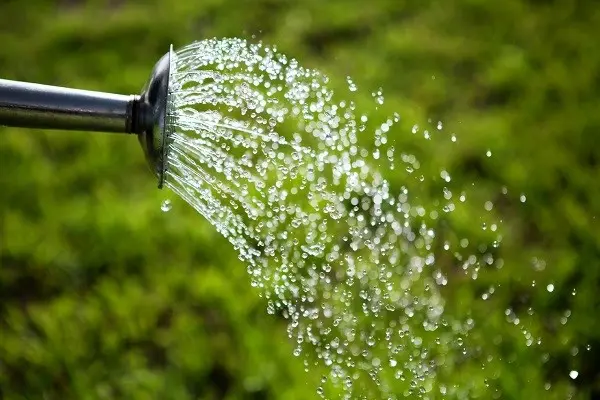
It takes a long time and thoroughly ventilate the greenhouse. It is better to open it after watering. Otherwise, the appearance of fungal infections in eggplants is not excluded. It is impossible to create a draft by opening holes on both sides of the greenhouse at once. The temperature regime for growing, at which eggplants feel normal in a greenhouse, is + 25 – + 28 degrees. Temperature drops to + 14 and increase to + 34 degrees are dangerous. In addition to ventilation, it is possible to regulate the indicators in the heat by watering the paths inside the structure with water. Features of the formation of bushes depend on the variety of vegetables. Some require pinching the top, others need to stimulate the development of lateral stems, and others need to remove lateral shoots to the first fork.
Top dressing and fertilization
Eggplant care in a greenhouse (at least in the Urals, at least in another region) is impossible without fertilization. Depending on the condition of the bushes, it can be carried out from 2 to 6 times. It is advised to take ready-made complex top dressing. These include “Kemira wagon” and “Mortar”. During the fruiting period, it is better to use nitrogen-phosphorus top dressing. These are superphosphate and ammonium nitrate. Ash is also good.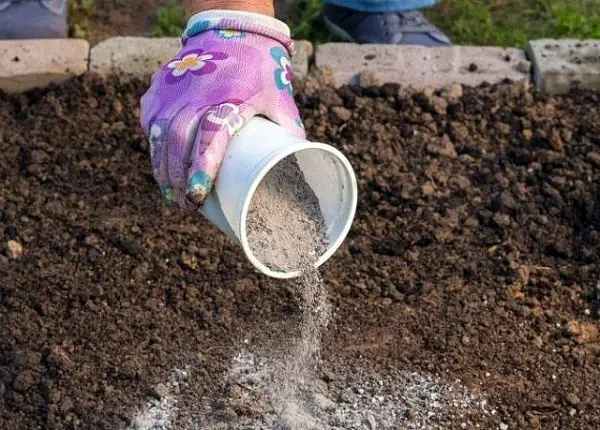
The day before fertilizing, it is recommended to moisten the soil normally. And after making the bushes spud. Foliar top dressing is also necessary – on the leaves. It is held 2-3 times a month. To increase the number of ovaries and flowers, you need to spray the crops with boric acid at the rate of 1 gram per 5 liters of water. A fertilizer with a high nitrogen content will help stimulate excellent stem growth.
Diseases and pests
Those who decide to plant eggplants in their greenhouse should know not only how to care for them, properly feed them, and so on, but also about possible vegetable diseases. Why? To have time to help the plants in time. Sometimes, as a result of excessive moisture, crops can suffer from gray rot. It is manifested by characteristic light gray spots on the surface. It helps to establish a greenhouse heating system and thorough ventilation.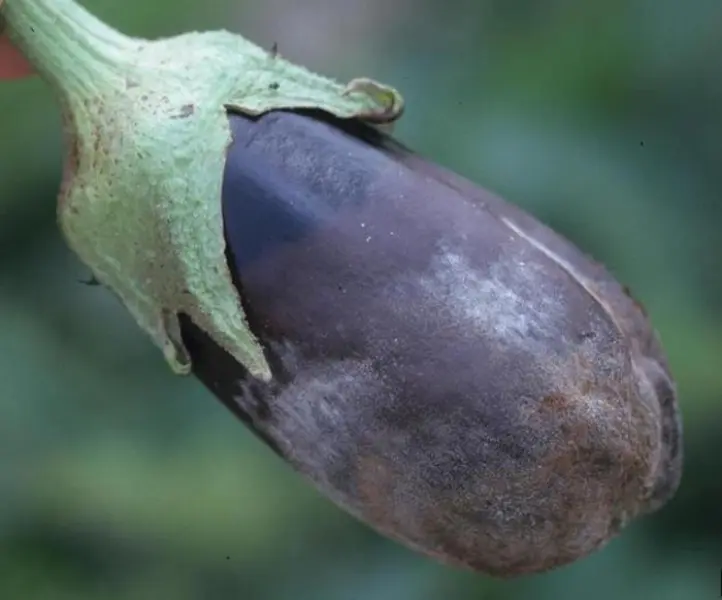
Phytophthora is also possible. It is easily distinguished by brown spots that gradually spread throughout the plant. Today there is no sure way to deal with such a scourge. Internal necrosis can really be suspected by the presence of yellow patches on the eggplant. This is a viral disease. The diseased bush is advised to be removed, and the remaining ones should be treated with an antiviral drug for prevention. A mosaic of leaves can also appear on eggplants. In this case, the foliage is covered with light spots, and the fruits become hard. The reasons are low temperatures and lack of lighting.
Video “Care”
From the video you will learn how to properly care for eggplant.









